Northern Ireland's peatlands face 'toxic' nitrogen risk
- Published
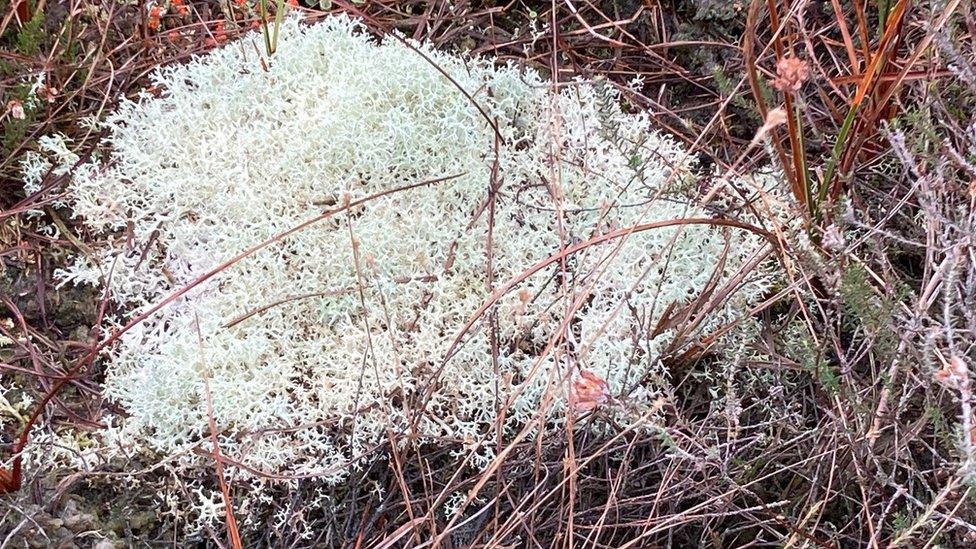
Nitrogen has damaged lichen at Ballynahone Bog
Researchers have found unexpectedly high levels of nitrogen in vegetation on the remote Cuilcagh mountainside in County Fermanagh.
Nitrogen is not a greenhouse gas, but it poses a real threat.
Peatlands are considered some of the most valuable ecosystems on the planet, and can reduce greenhouse gases by locking away carbon.
However, rainwater is bringing emissions from thousands of miles away and killing critical species.
"Nitrogen is directly toxic to our peat-forming species," said Roisin Grimes, a peatlands officer with Ulster Wildlife.
"So our sphagnum mosses are what take carbon out of the atmosphere and lock it into layers of peat, and they're actually being killed by these high levels of nitrogen."
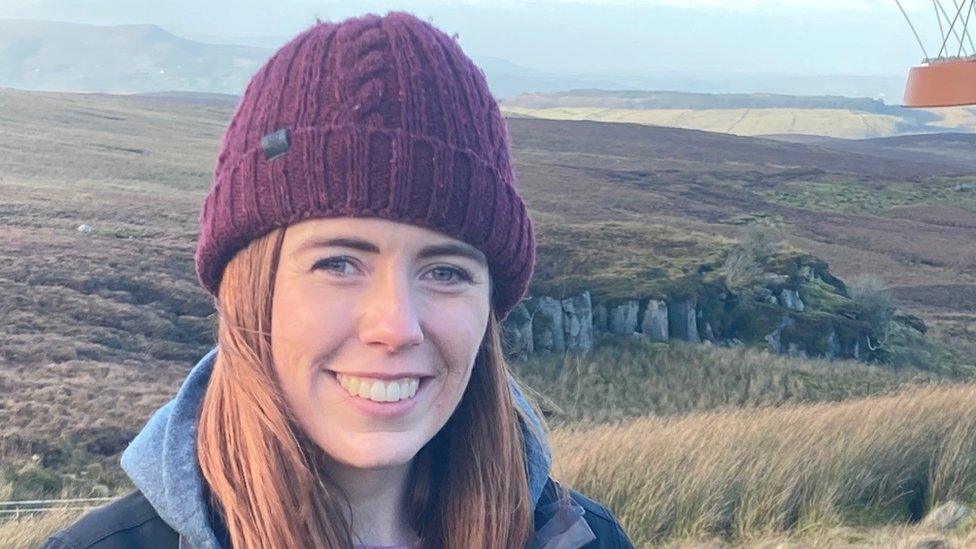
Roisin Grimes says nitrogen from thousands of miles away is being carried to the peatlands by rainwater
After air monitoring showed low levels of nitrogen, she began looking at something Fermanagh gets plenty of - rain.
"What we have here is our wet deposition monitor, and it's looking at nitrogen that's maybe being emitted from miles away, up to thousands of miles away, it's gone into the atmosphere and then it's come back down on to this site here on Cuilcagh through rainwater."
Cuilcagh is one of a number of sites across Northern Ireland where the monitoring work is taking place, and it is not complicated.
The upturned bottom half of a plant pot, pierced with wires running down into little pots, collects samples from the air, while a plastic funnel channels rainwater into a bucket.
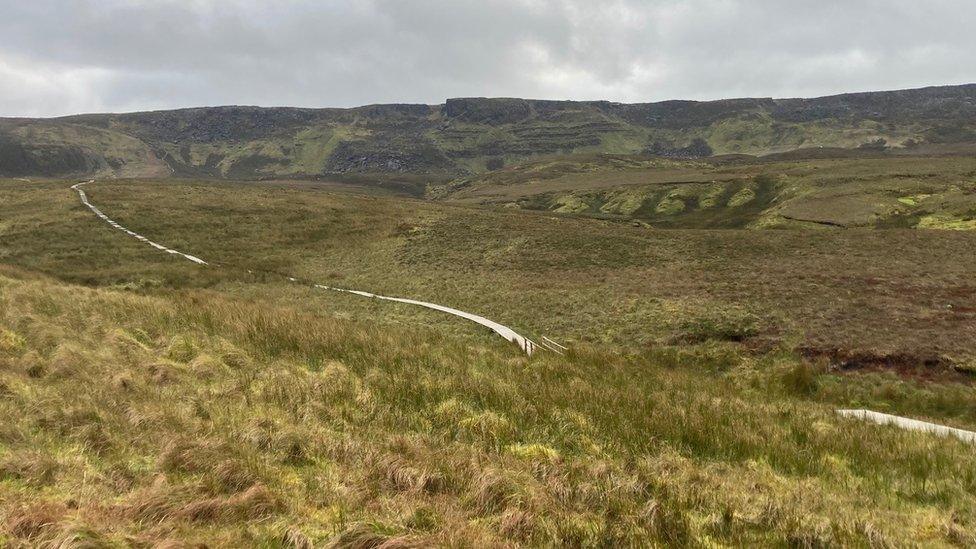
The so-called Stairway to Heaven boardwalk at Cuilcagh
The samples from all sites are collected and sent away for analysis.
At Ballynahone Bog near Maghera, there are monitors strung across the slowly dampening ground, to offer the widest possible picture of what is happening with nitrogen emissions.
"One in 10 of our species in Northern Ireland are at risk of extinction - these sites are really ark sites if you like, they're reservoirs of our biodiversity," said Keith Finnegan, from the Northern Ireland Environment Agency.
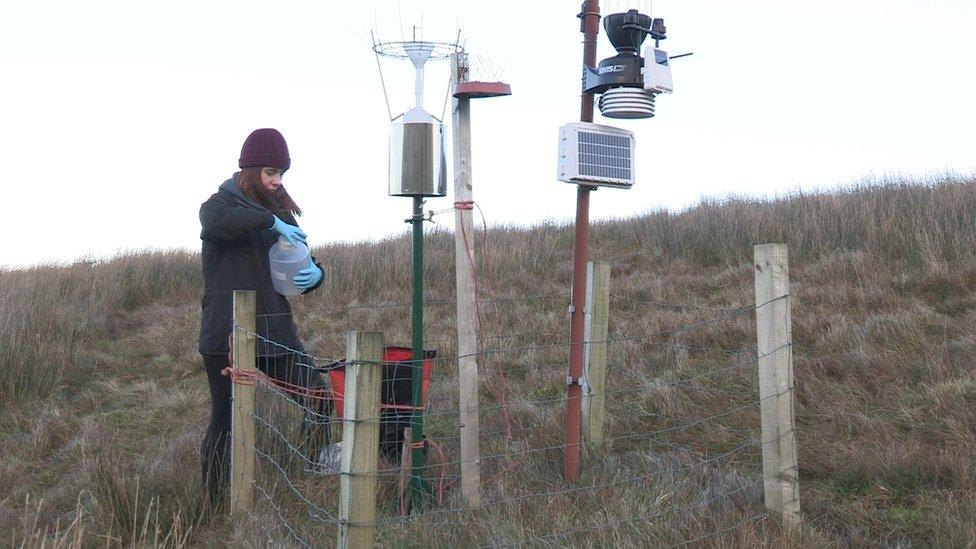
Cuilcagh is one of a number of sites in Northern Ireland where nitrogen levels are being monitored
"They also have the potential to deliver ecosystem services, store water to prevent flooding, capture carbon to prevent global warming.
"They're fundamentally important to producing a sustainable society and a sustainable economy."
Ballynahone Bog is one of our most protected sites - it's designated to have Special Scientific Interest, as well as being a Special Area of Conservation (SAC), a National Nature Reserve (NNR) and a RAMSAR site - a wetland of international importance.
It is slowly becoming a functioning bog again, with historic drains blocked to allow water to build up and encourage the carbon-absorbing plants to re-establish themselves.
But nitrogen emissions from nearby agriculture, transport, power generation and heating has already damaged lichens on the site.
The gas is also contained in ammonia.
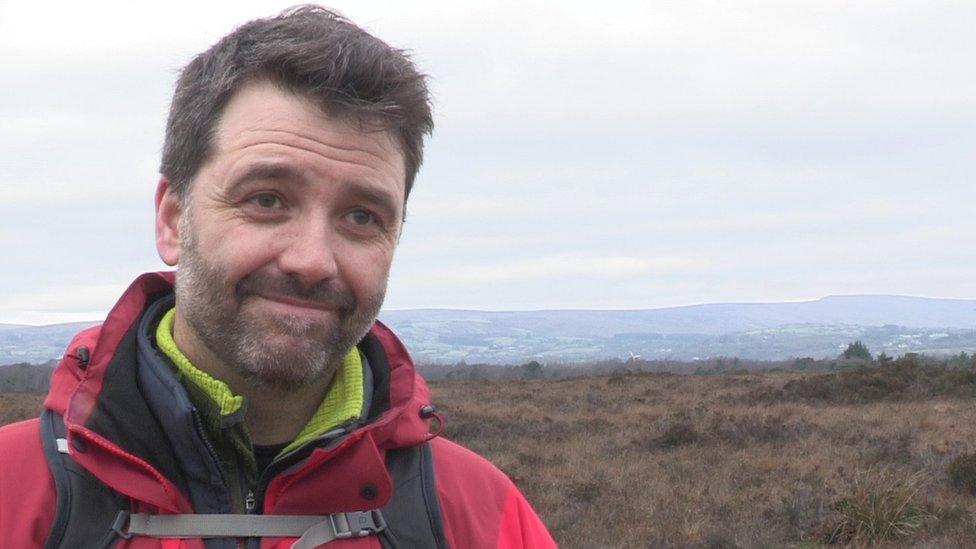
Keith Finnegan says nitrogen needs to be kept on farms, and not allowed to get into the environment
"97% of ammonia in Northern Ireland comes from agriculture," said Mr Finnegan.
"What we want to do is work with the agricultural sector to keep that nitrogen on the farm, where it can do good, where it can grow crops, where it can help feed us.
"At the minute, a lot of it is escaping, and we want to help the agricultural sector modernise to capture that nitrogen and keep it where it should be, producing food."
That is being done through advances in slurry-spreading equipment and changes in livestock feed to reduce the amount of ammonia excreted.
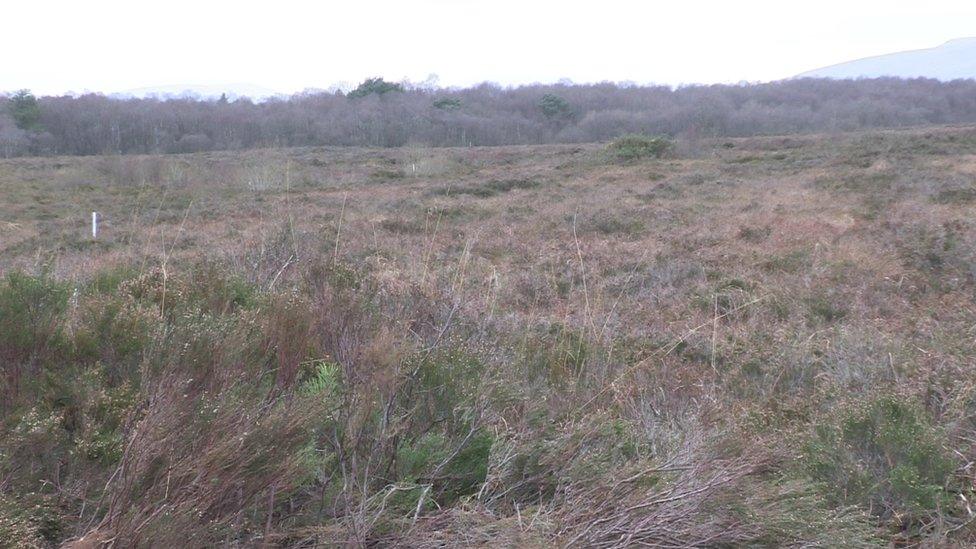
Peatlands are considered one of the most valuable ecosystems
Almost a fifth of Northern Ireland (18%) is covered in peatland.
But much of it is already damaged.
Over the decades, it has been drained to extract turf for fuel, or make the land suitable for farming, so it no longer absorbs emissions and in many cases emits the carbon it has locked away over millennia.
The draft environment strategy proposes the longest, slowest target in the UK and Ireland for conserving or restoring our peatlands.
But nitrogen is not just Northern Ireland's problem.

Sphagnum mosses are returning to Cuilcagh, but nitrogen is an ongoing threat to the species
"We do have solutions to this nitrogen deposition problem," said Ms Grimes.
"But it's a complex issue, and it's going to take work not just in Northern Ireland, but across the globe to try and reduce these nitrogen levels and how much is actually being emitted.
"Because we don't really have much power to do anything once it gets on the site."

Analysis: A threat to bogs
While nitrogen is a harmless gas that forms most of the Earth's atmosphere, it becomes damaging to the planet when it is produced through processes like driving a car or heating a house - fossil fuel combustion.
It is also combined with hydrogen to form ammonia, which is used in agriculture as a fertiliser.
And it is released into the atmosphere when the excretions of cattle are mixed.
Deposition of nitrogen on peatlands is believed to be an important threat to bogs.

Related topics
- Published8 January 2022
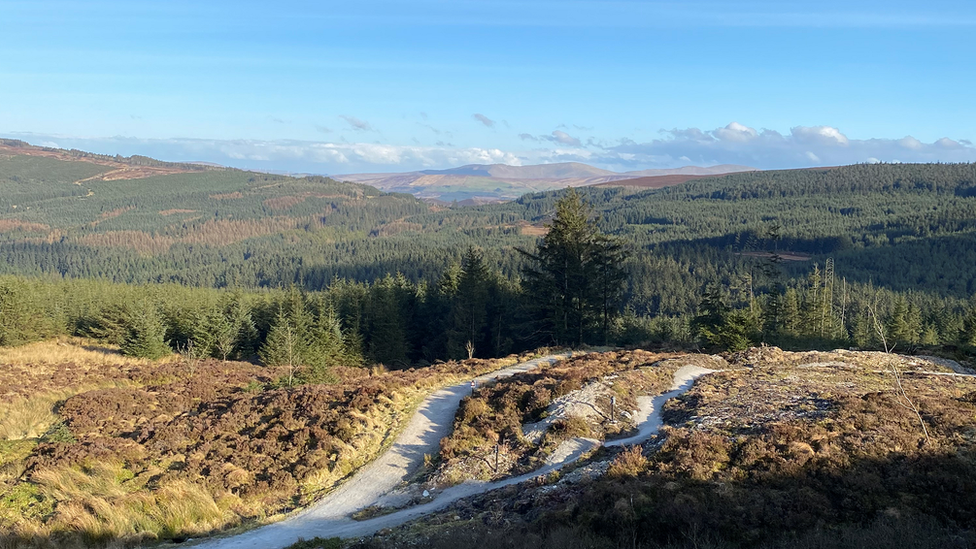
- Published12 November 2021
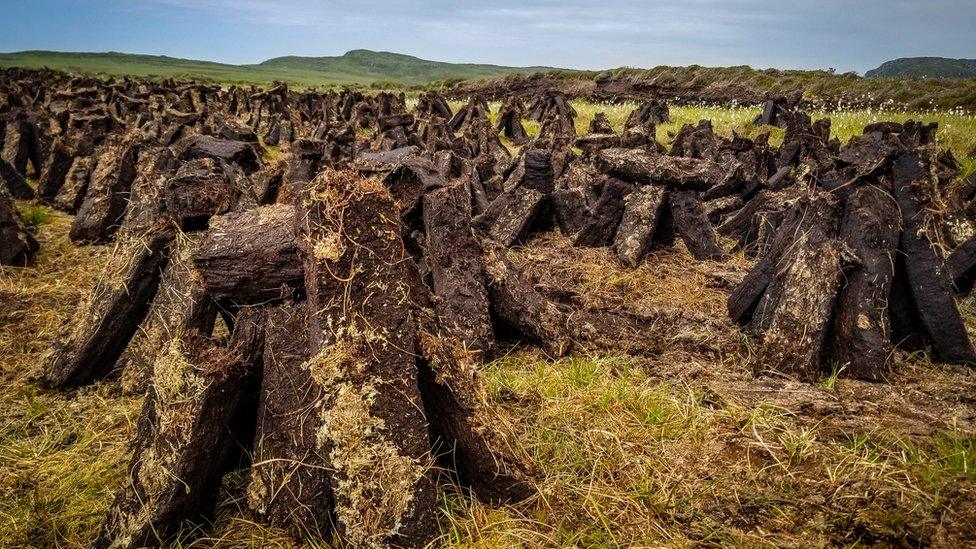
- Published6 November 2020
